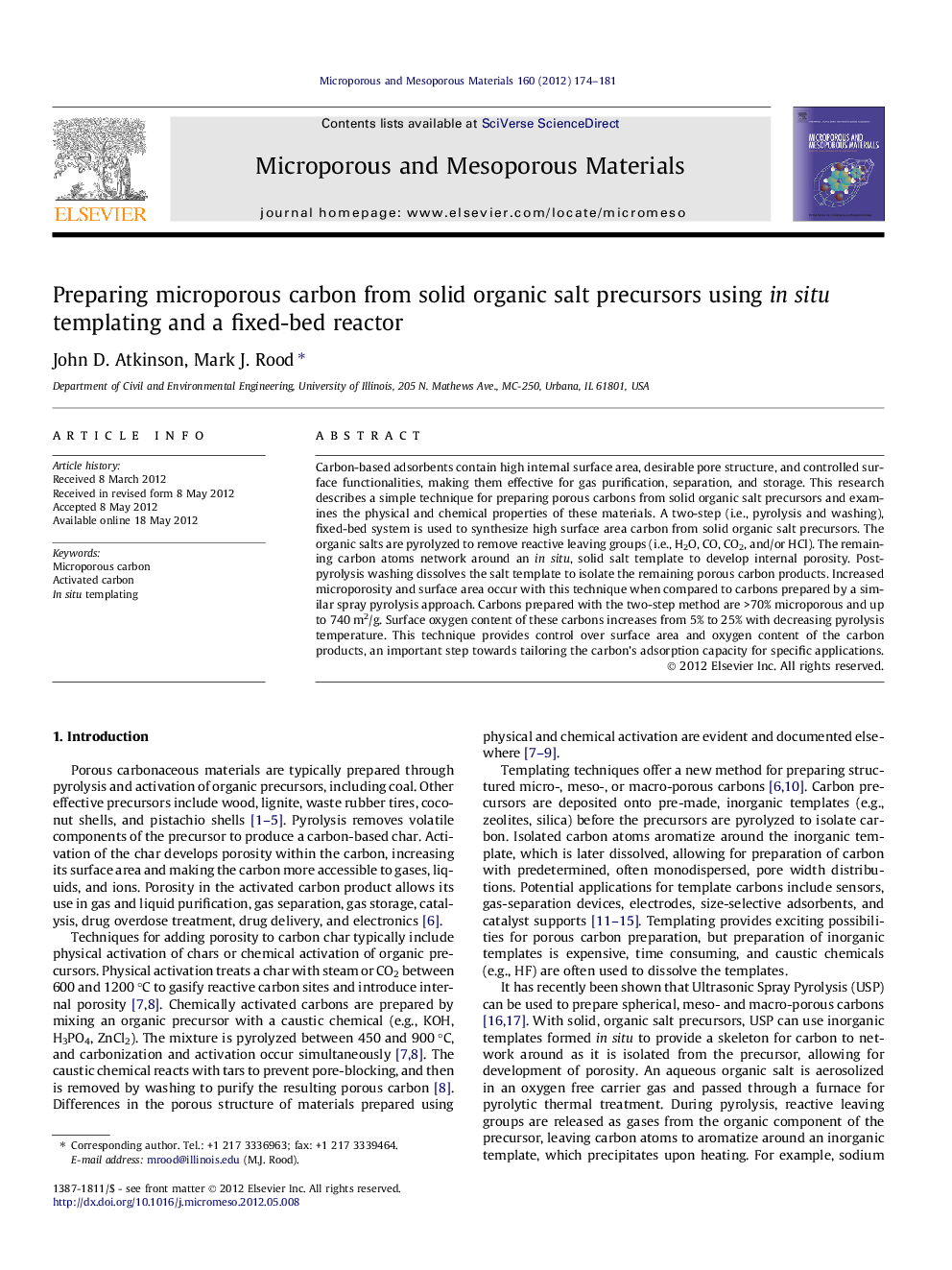| Article ID | Journal | Published Year | Pages | File Type |
|---|---|---|---|---|
| 74263 | Microporous and Mesoporous Materials | 2012 | 8 Pages |
Carbon-based adsorbents contain high internal surface area, desirable pore structure, and controlled surface functionalities, making them effective for gas purification, separation, and storage. This research describes a simple technique for preparing porous carbons from solid organic salt precursors and examines the physical and chemical properties of these materials. A two-step (i.e., pyrolysis and washing), fixed-bed system is used to synthesize high surface area carbon from solid organic salt precursors. The organic salts are pyrolyzed to remove reactive leaving groups (i.e., H2O, CO, CO2, and/or HCl). The remaining carbon atoms network around an in situ, solid salt template to develop internal porosity. Post-pyrolysis washing dissolves the salt template to isolate the remaining porous carbon products. Increased microporosity and surface area occur with this technique when compared to carbons prepared by a similar spray pyrolysis approach. Carbons prepared with the two-step method are >70% microporous and up to 740 m2/g. Surface oxygen content of these carbons increases from 5% to 25% with decreasing pyrolysis temperature. This technique provides control over surface area and oxygen content of the carbon products, an important step towards tailoring the carbon’s adsorption capacity for specific applications.
Graphical abstractFigure optionsDownload full-size imageDownload as PowerPoint slideHighlights► Two-step method (pyrolysis and washing) prepares porous carbon from organic salt precursors. ► Porosity is developed via in situ inorganic salt template formed during pyrolysis. ► Prepared carbons are >70% microporous and up to 740 m2/g. ► Surface oxygen content of prepared carbons (5–25%) is dependent on pyrolysis temperature.
